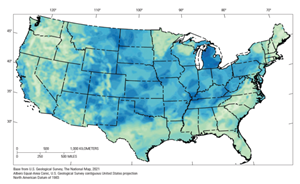News
Renaissance Philanthropy announces new initiative to accelerate geologic H2
H2 is the most abundant element in the universe - and potentially beneath our feet. Geoscientists at the U.S. Geological Survey recently estimated that just 2% of the H2 in naturally-occurring reservoirs or iron-rich rocks could power civilization for centuries at a fraction of the cost of today’s H2 production. However, geologic H2 (geoH₂) is unlike any other form of produced H2: it requires little electricity or land to manufacture and is often generated naturally, making it the first new primary energy source discovered in 80 yrs.
With generous support from Adam Winkel, Builders Vision, and Victor Shao, as well as aligned commitments from partners like the Grantham Foundation for the Protection of the Environment, Renaissance Philanthropy has assembled a world-class team to scope high-impact opportunities that will accelerate the commercialization of geoH₂.
Ishan Sharma will be joining Renaissance Philanthropy to lead this initiative, which will include efforts to create a national network of testbeds and advance builder-friendly regulation at the state and federal level. He brings experience designing national industrial policies and deep tech commercialization strategies as the former principal advisor on industrial innovation and geothermal lead at the White House Office of Science and Technology Policy.
“Shale and geothermal each took more than half a century to become the industries we know today, and commercial adoption was enabled by early government support that broke silos, built testbeds, and accelerated the ecosystem’s learning-by-doing curves,” Ishan said.
“To deploy geologic H2 on a timeline that matters for our economy and planet, we’ll need to follow the playbook that scaled shale and geothermal – but do it faster, smarter, and in more places.”
To force-multiply this work, Renaissance Philanthropy is also announcing the formation of a distinguished advisory council consisting of leading scientists, investors, and policy officials to advise on this initiative:
- Douglas Wicks, former Program Director for U.S. Department of Energy’s ARPA-E Geologic H2 portfolio
- Mary Haas, Venture Partner, Breakthrough Energy
- Alexis Templeton, Professor of Geological Sciences at the University of Colorado
- Geoff Ellis, Project Chief of the Potential for Geologic H2 Resources Project, U.S. Geological Survey
- Allegra Hosford Scheirer, H2 Exploration & Geoscience Consultant, former Co-Director of the Stanford Basin Processes and Subsurface Modeling Consortium
- Mark Myers, Commissioner for the U.S. Arctic Research Commission and former Director of the U.S. Geological Survey
- Doug Hollett, CEO of MH Technology Partners and Originator of the Utah FORGE geothermal test site
- Morten Stahl, Founding Partner & Investor, Natural H2
By combining deep scientific, private sector, and policy expertise, this initiative will chart a path for geoH₂ that avoids the pitfalls of siloed development, leverages public and private capital, and positions the field for rapid, coordinated growth.
At scale, geoH₂ could deliver system-wide climate benefits and energy prosperity, including quadrupling demand for sustainable aviation fuels and captured CO₂, achieving net-zero with 17% less land, and creating new, durable revenue options for governments as oil-and-gas royalties once did. Recent prospectivity analysis points to significant generation potential across the U.S., from Oklahoma to Alaska, underscoring the opportunity for locally-led demonstrations and shared testing infrastructure.
No single organization will scale geoH₂ at the pace required. Renaissance Philanthropy will play an ecosystem-building role and has already succeeded at brokering key partnerships among regional and national funders, energy companies, research institutions, and government leaders to catalyze progress.



